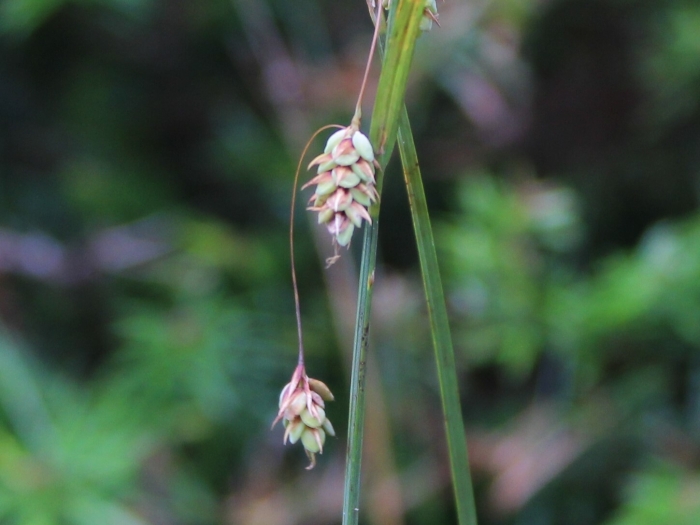Boreal Bog Sedge
(Carex magellanica)
Boreal Bog Sedge (Carex magellanica)
/
/

Alex Karasoulos
CC BY 4.0
Image By:
Alex Karasoulos
Recorded By:
Copyright:
CC BY 4.0
Copyright Notice:
Photo by: Alex Karasoulos | License Type: CC BY 4.0 | License URL: http://creativecommons.org/licenses/by/4.0/ | Rights Holder: Alex Karasoulos | Publisher: iNaturalist | Date Created: 2023-08-10T11:11:33-07:00 |
























Estimated Native Range
Summary
Carex magellanica, commonly known as Boreal Bog Sedge, is a perennial herbaceous plant native to cool temperate and boreal regions of the Northern Hemisphere, including North America, Europe, and Asia. It thrives in sphagnum bogs, marshes, and wet woodlands, often under acidic conditions. This sedge typically grows at a moderate rate to a height of 1-2 feet (0.3-0.6 meters) and a width of 0.5-1 feet (0.2-0.3 meters). Its foliage is grass-like, with narrow leaves that contribute to a tufted appearance. The flowers are green or brown and inconspicuous, blooming in the summer, and are followed by small, capsule-like fruits that can be of interest in a garden setting.
Boreal Bog Sedge is valued for its ability to thrive in wet conditions and is often used in rain gardens, water features, and as a ground cover in damp areas of the landscape. It is also beneficial for erosion control and provides habitat for wildlife. In cultivation, it requires full sun to part shade and prefers slow-draining clay or loam soils with high moisture levels. While generally low-maintenance, it can be susceptible to leaf spot diseases in overly wet conditions. This sedge is not known for aggressive roots or significant invasiveness, making it a reliable choice for controlled naturalistic plantings.CC BY-SA 4.0
Boreal Bog Sedge is valued for its ability to thrive in wet conditions and is often used in rain gardens, water features, and as a ground cover in damp areas of the landscape. It is also beneficial for erosion control and provides habitat for wildlife. In cultivation, it requires full sun to part shade and prefers slow-draining clay or loam soils with high moisture levels. While generally low-maintenance, it can be susceptible to leaf spot diseases in overly wet conditions. This sedge is not known for aggressive roots or significant invasiveness, making it a reliable choice for controlled naturalistic plantings.CC BY-SA 4.0
Plant Description
- Plant Type: Grass
- Height: 1-2 feet
- Width: 0.5-1 feet
- Growth Rate: Moderate
- Flower Color: N/A
- Flowering Season: Summer
- Leaf Retention: Evergreen
Growth Requirements
- Sun: Full Sun, Part Shade
- Water: High
- Drainage: Slow, Standing
Common Uses
Erosion Control, Low Maintenance, Water Garden
Natural Habitat
Cool temperate and boreal regions, including sphagnum bogs, marshes, and wet woodlands
Other Names
Common Names: Magellan Sedge, Tall Bog Sedge, Bog Sedge, Little Sedge, Poor Bog Sedge, Poor Sedge, Stunted Sedge
Scientific Names: , Carex magellanica, Carex atrata subsp. magellanica, Carex atrata var. magellanica, Carex cernua, Carex limosa var. magellanica, Carex magellanica subsp. planitiae, Carex magellanica var. planitiae,
GBIF Accepted Name: